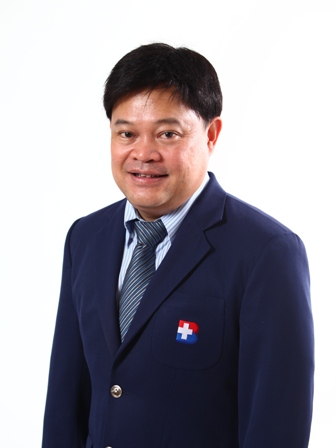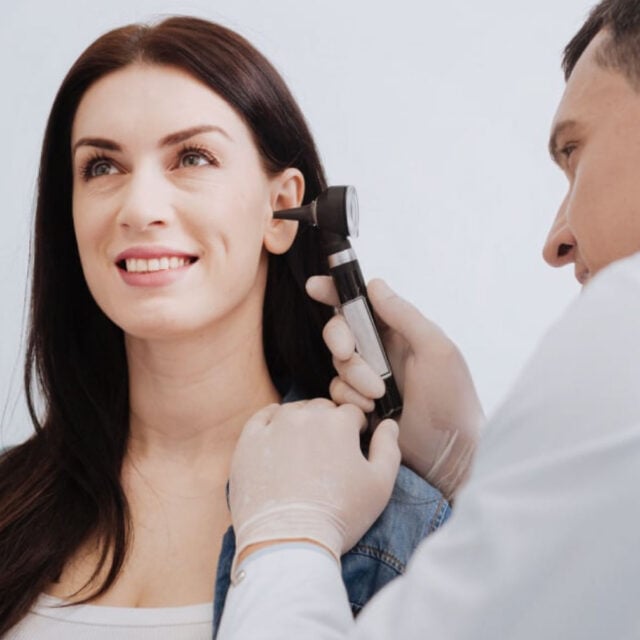Regarding endocrine disorders, thyroid diseases have been ranked as the common conditions with increased incidences worldwide. These conditions are often referred to thyrotoxicosis or hyperthyroidism and thyroid tumors.
Get to know the thyroid gland
Thyroid gland is a small, butterfly-shaped gland located at the base of the front of the neck, below Adam’s apple. Hormones produced by the thyroid gland e.g. triiodothyronine (T3) and thyroxine (T4) play an important role in the body, affecting all processes of metabolism, body temperature and heart rate. The pituitary gland and hypothalamus both control the thyroid gland for maintaining thyroid hormones in appropriate ranges at all times.
“Statistics indicates that 85% of thyroid diseases have been generated due to individual’s abnormalities whereas only 15% of cases have been related to genetic alterations or inherited conditions. Moreover, a number of people are unaware of their thyroid disorders”
Signs and symptoms of thyroid diseases
A wide range of signs and symptoms can be present among individual patients. As one of commonly found conditions, thyroid nodules are solid or fluid-filled lumps that form within the thyroid while thyroid’s function might not alter. Thyroid nodules can be a single nodule or a cluster of nodules. The thyroid mass is clearly seen on the front side of the neck and the mass moves with swallowing. Due to iodine deficiency, the thyroid gland can progressively enlarge, developing a goiter as it tries to keep up with demand for thyroid hormone production. In addition, enlarged thyroid gland can be a result from hyperthyroidism (overactive thyroid) or thyrotoxicosis. Hypothyroidism (underactive thyroid) is a condition in which thyroid gland does not produce sufficient thyroid hormones, leading to fatigue, loss of concentration, stress or depression, sleep disturbance, lethargy or a lack of energy and enthusiasm, muscle aches, tenderness and stiffness, increased sensitivity to cold, weight gain and dry skin. If abnormal sign or symptom exhibits, confirmative diagnosis must be accurately made, allowing for appropriate treatments in timely manner.
Treatment of hyperthyroidism
Hyperthyroidism or overactive thyroid occurs when the thyroid gland produces thyroid hormone excessively. Hyperthyroidism can accelerate body’s metabolism, causing unintentional weight loss and a rapid or irregular heartbeat.
Hyperthyroidism can be treated by two main anti-thyroid medications: propylthiouracil (PTU) and methimazole (MMI). These medications gradually alleviate symptoms of hyperthyroidism by preventing thyroid gland from producing excess amounts of thyroid hormones. Symptoms usually begin to improve within several weeks to months. However, treatment with anti-thyroid medications should typically continue at least a year and often longer. Both drugs can cause undesired side effects, including fever, decreased white blood cells thus increasing the chance of getting infections, skin rash and liver damage. Under close supervision, these medications must be strictly taken as prescribed.
Aside from anti-thyroid medications, hyperthyroidism can be also treated by radioactive iodine. Taken by mouth, radioactive iodine is absorbed by the thyroid gland and it causes the enlarged gland to shrink. Excess radioactive iodine disappears from the body in weeks to months. It is considered an effective treatment with considerably quick effect.
Thyroid nodules
Thyroid nodules are solid or fluid-filled lumps that form within the thyroid gland. They are more common in women than men, with 4:1 ratio. Several conditions can induce nodules to develop in the thyroid gland, including overgrowth of normal thyroid tissue, fluid-filled cavities (cysts) in the thyroid, chronic inflammation of the thyroid, benign (non-cancerous) tumor and thyroid cancer. Most thyroid nodules are not serious. However, 5-10% of thyroid nodules can further progress to thyroid cancer.
The major treatment for thyroid nodules is thyroid surgery. The thyroid can be surgically removed one or both sides, depending primarily on the extent of the disease. Thyroid surgery, in case of non-cancerous nodules are confirmed, might be considered if patients have personal concern about enlarged thyroid that significantly affects their confidence and daily life or the enlarged thyroid causes other complications such as tracheal or esophageal compression.
Thyroid surgery can be performed by using several surgical approaches. Open thyroidectomy is a conventional surgery to remove all of the thyroid tissue through incision on the neck. This conventional approach can also remove an area of lymph nodes (lymph node dissection) that might be required in some cases. However, surgical incision usually turns to be a scar that can be seen on the neck and patients might experience discomfort in the neck after surgery. More importantly, complication of open thyroidectomy may include damages to the nerves that control vocal cords (recurrent laryngeal nerves), leading to hoarseness or voice changes. Although these effects are temporary which are usually resolved within a week, cosmetic disadvantage caused from the scar on the neck often impairs patient’s confidence and appearance.
Transoral Endoscopic Thyroidectomy Vestibular Approach (TOETVA)
A truly scarless thyroid surgery that ideally provides superior cosmetic advantage has been emerged, called Transoral Endoscopic Thyroidectomy Vestibular Approach (TOETVA). Instead of having surgical incision on the neck, TOETVA is conducted through small incisions between the gum and lower lip. Therefore, there is no scar on the skin after surgery. It serves as a better alternative option for patients who have cosmetic concerns.
Indications of TOETVA
- Imaging results obtained from X-ray scan show thyroid nodules sized 4-6 cm.
- No history of chin or neck surgery
- No history of neck radiation
- No contraindications to being anesthetized prior to operation
During the surgery, three incisions are placed in the vestibular region of the oral cavity just below the lower lip for placement of 2 lateral 5-mm trocars and 1 centrally placed 10-mm trocar. Through these small incisions, laparoscopic and other surgical instruments are inserted to surgically remove the thyroid gland. While operating, the recurrent laryngeal nerves on both sides can be clearly visualized, enabling the surgeon to preserve the nerves. Since there are a lot of blood vessels in an oral vestibule and cavity, surrounding tissues naturally heal with faster recovery.
This procedure entails a paradigm shift, away from the conventional thyroidectomy, toward a more refined technique in an attempt to hide scarring and improve cosmetics in the neck. Several remote-access thyroidectomy techniques have been developed over the years including the axillo-breast approach, the transaxillary approach and the retro-auricular approach. While all of these approaches exhibit cosmetic advantages from the conventional approach, with the scar moved from the neck to other less visible areas of the body, cutaneous scarring remains inevitable along with extensive tissue dissection to reach the thyroid gland from surgical incision areas. Compared to other laparoscopic approaches, vestibular approach applies the cosmetic benefits and avoids the drawbacks of the other remote access procedures which are less tissue dissection and less distance to reach the thyroid gland as well as complete avoidance of a skin incision (with incisions hidden in vestibular mucosa).
Superior advantages of TOETVA
- No skin incision and no scar on the neck region
- Small incisions are hidden in vestibular mucosa between the gum and the lower lip
- The recurrent laryngeal nerves that control the vocal cords can be monitored under endoscopic assistance, allowing these nerves to be preserved while operating and reducing post-operative complications related to vocal cord injuries.
- Less complications
- Faster wound healing
- Less blood loss
- Less pain
- Shorter operative time









